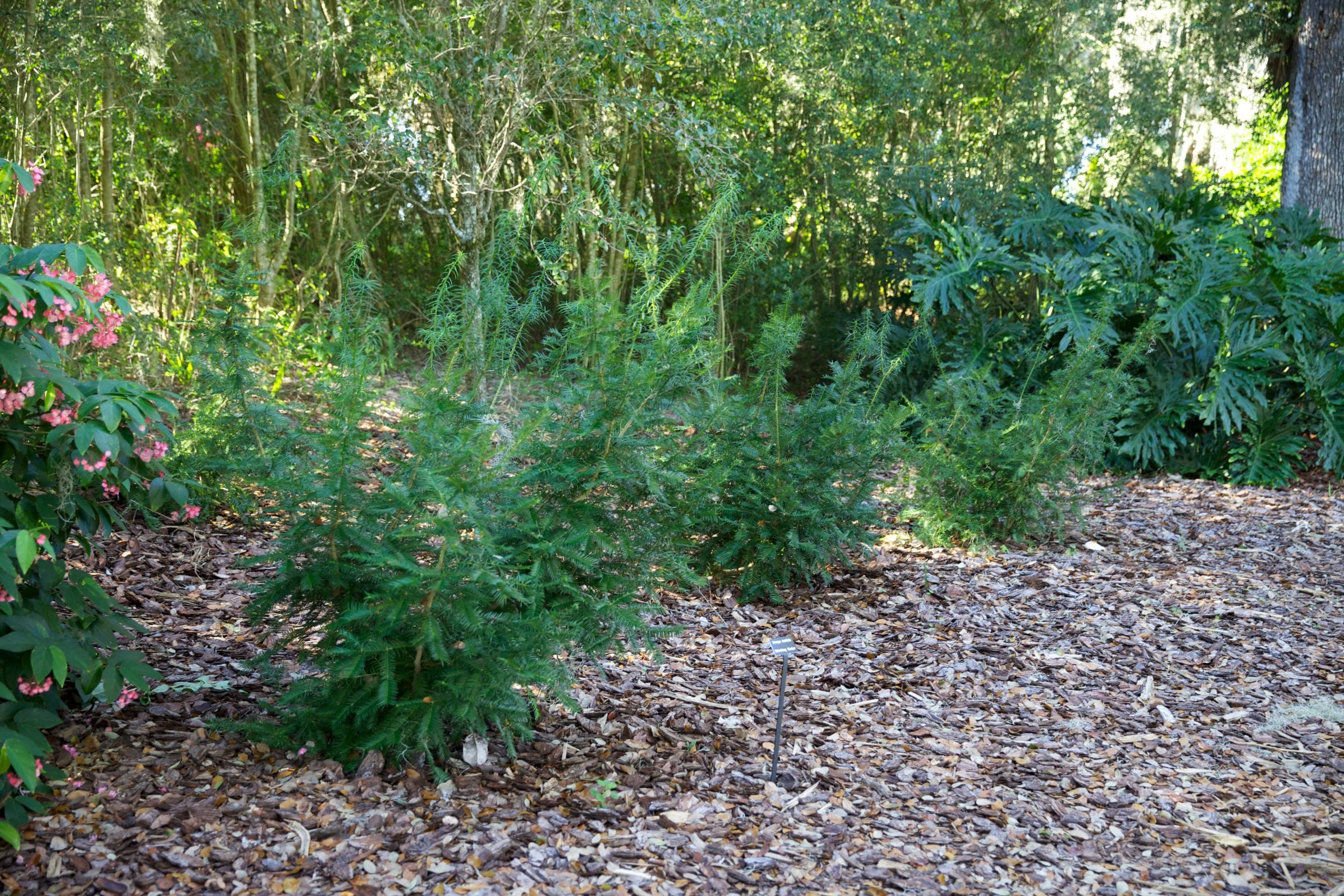Florida torreya's (Torreya taxifolia) current habitats are threatened by climate change. The Torreya Guardians, a self-organized group of scientists and informed citizens, took it upon themselves in 2008 to move this tree species to new, suitable habitats north of its native range. This was the first assisted migration of an endangered species in the United States. It generated an ongoing debate about the ethics, consequences and potential benefits of using assisted migration as a conservation tool.

Assisted migration is the deliberate movement of plants or animals to new habitats. Species are well-adapted to certain habitats, which are composed of favorable environmental and climatic conditions. When these conditions are altered, such as under climate change, species are forced to either get used to the new conditions (adapt) or move (migrate) to new suitable habitats. If these species fail to adapt or migrate, they face population loss or extinction. Assisted migration can be performed to aid species' adaptation to climate change.
Supporters of assisted migration believe that it may be the only way to save certain species. Especially species that most likely will not be able to adapt or migrate quick enough to avoid the consequences of rapid climate change. On the other hand, those in opposition claim the process could do more harm than good. There's no guarantee that species will survive when moved. There is also a risk of spreading invasive species, new pests, and diseases in the process.
Around the world, certain tree species, like the Florida torreya, will need to move to new habitats in order to survive climate change. The general trends in climate change state that suitable climates for most tree species will be further north in latitude or up higher in elevation.
But how will these trees move? Trees are not mobile like animals; they cannot simply uproot themselves and walk to a new habitat. Instead, tree populations gradually inch to new locations by spreading their seeds. So they do not move far, and when they do move, it is not done quickly. Trees are also long-lived species which do not reproduce as rapidly as other plant species. And if the rate of climate change is too rapid for trees to adapt or migrate, they may require our help in doing so.
The forestry industry is starting to seriously consider assisted migration for forest management and conservation. After harvest, a forest site is reforested with forest tree seedlings. Traditionally, foresters select seedlings from local geographic sources for reforestation. It is assumed that these local seedlings will be adapted for the local climate. However, while these local seedlings are adapted to current local climate conditions, they might not be as well-adapted to different climate conditions. And having poorly adapted seedlings could lead to unhealthy or dying stands of trees.
Yet the permanent loss of a tree species to climate change is not an option for foresters. The timber industry profits from productive forests, so foresters are considering the assisted migration of tree species in order to preserve the economy and health of forest ecosystems.
Canada has become a world leader in the assisted migration of forests. Forest researchers and policy makers have used climate change projections to come up with new forestry regulations and policies to allow for assisted migration. British Columbia and Alberta have extended planting sites 200 meters higher in elevation for most tree species, while Alberta has also extended these sites 2 degrees of latitude northward. New policies in British Columbia also allow for planting western larch (Larix occidentalis) outside its previous range, where it was threatened by climate change.
The Torreya Guardians provide an alarming example of what passionate citizens are capable of doing when it comes to species conservation. Their actions were legal, but the risks associated with assisted migration are still too great for assisted migration to be performed unregulated. Whether or not you agree with assisted migration, it is clear that we need strong scientifically-based policies in place for if/when assisted migration is used in conservation and management.
 Kelly Kerr is a research assistant in the Plant Biology department at UGA investigating stress physiology in sunflowers. Her research interests include forest ecophysiology, and she is passionate about maintaining resilient forest ecosystems under climate change. She enjoys nearly all forms of outdoor recreation, so you'll probably find her around town trail running, mountain biking or at the climbing gym. Get in touch with Kelly at klkerr86@gmail.com. More from Kelly Kerr. Kelly Kerr is a research assistant in the Plant Biology department at UGA investigating stress physiology in sunflowers. Her research interests include forest ecophysiology, and she is passionate about maintaining resilient forest ecosystems under climate change. She enjoys nearly all forms of outdoor recreation, so you'll probably find her around town trail running, mountain biking or at the climbing gym. Get in touch with Kelly at klkerr86@gmail.com. More from Kelly Kerr. |
About the Author
- athenssciencecafehttps://athensscienceobserver.com/author/athenssciencecafe/April 17, 2020
- athenssciencecafehttps://athensscienceobserver.com/author/athenssciencecafe/April 12, 2020
- athenssciencecafehttps://athensscienceobserver.com/author/athenssciencecafe/April 3, 2020
- athenssciencecafehttps://athensscienceobserver.com/author/athenssciencecafe/March 30, 2020







